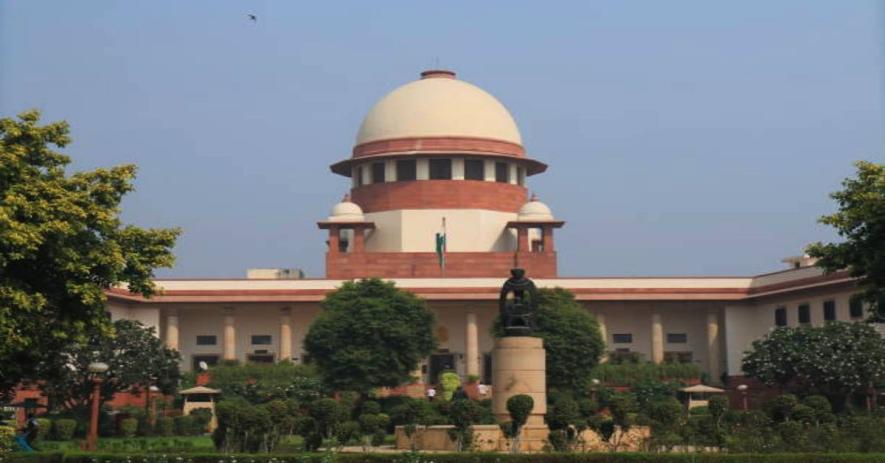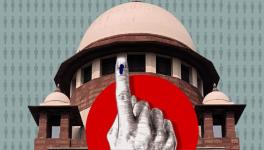SC's 3-Yr Practice Ruling, a Case Study in ‘Indirect Discrimination’

Recently, the Supreme Court, in All India Judges Association (AIJA) v. Union of India (2025) deliberated on a seminal issue on the requirement of a minimum of three years of legal practice for appearing in the examination for the post of Civil Judge (Junior Division), which the Court had abolished in the Third AIJA Case (2002).
This issue has long been debated, with conflicting perspectives. The Law Commission of India’s 117th Report (1986) supported fresh law graduates into judicial service but emphasised training to offset their lack of experience. Likewise, the Shetty Commission Report contended that modern legal education, especially the five-year degree’s practical training, made the three-year practice rule unnecessary, proposing institutional training instead. This view was later upheld by the top Court in the Third AIJA case.
However, the Supreme Court has reinstated the mandatory three-year legal practice for Civil Judge (Junior Division) aspirants, emphasising that judicial officers handle critical matters of life, liberty, and property, requiring practical court experience.
A Case for Indirect Discrimination
The reinstatement of this rule for judicial aspirants creates a structural barrier, especially for women, particularly at the crucial early-career stage when they are most likely to enter the judiciary. While facially neutral, the rule disproportionately disadvantages women aspirants.
Indian law graduates typically enter the profession at the age of 23-24. Mandating three additional practice years delays judicial eligibility to 26-27, where societal and familial pressures, especially for women, often push them away from demanding careers. The legal field in India is already riddled with nepotism and elitism, where success is often contingent on family connections, financial backing, and professional godfathers.
Today, the Supreme Court has only one woman judge, a shocking reflection of how structural inequity prevents women from ascending to the highest judicial offices. The severe gender gap in the higher judiciary exposes this systemic bias. With just one woman judge currently in the top Court, the institutional barriers blocking women's advancement becomes glaringly apparent. Furthermore, many skilled lawyers choose not to join judicial services even after three years of practice, much like successful advocates who prefer to continue their profession over becoming District Judges via the ADJ exam.
The financial unviability of litigation exacerbates this disparity. Junior advocates earn meager stipends (₹10,000-20,000). Compounding this struggle is the crushing burden of education loans; many law school graduates invest ₹12–20 lakhs in their five-year degrees, only to enter a system that offers little immediate financial stability.
Additionally, gender bias in legal practice means women are often denied opportunities in lower courts, where work involves extensive travel, late hours, and a male-dominated environment. The rule, while aiming to ensure experience, unintentionally filters out meritorious women who cannot afford prolonged, underpaid roles. This contrasts sharply with UPSC norms, where 21-year-old graduates are capable of assuming district administration roles.
What is Indirect Discrimination?
Indirect discrimination occurs when a seemingly neutral policy or practice disproportionately disadvantages a specific group, regardless of intent. In many legal systems, such discrimination may be permissible if objectively justified. Direct discrimination, by contrast, is prohibited, with only limited exceptions in certain circumstances.
The concept of indirect discrimination first gained legal recognition through a decision of the Supreme Court of the United States, Griggs v. Duke Power (1971). Here, Duke Power Company had a history of racial job segregation, limiting African American workers to low-paying roles. After the Civil Rights Act, 1964 banned discrimination, the company imposed new requirements, like a high school diploma and aptitude tests, for better-paying jobs. Though seemingly neutral, these standards disproportionately excluded African Americans due to historically unequal education under segregation.
Another important case is the Bilka-Kaufhaus GmbH decision of the European Court of Justice, which addressed workplace discrimination. The Court found that excluding part-time workers (predominantly women) from pension benefits constituted indirect sex discrimination.
While the doctrine remains an evolving area in our jurisprudence, it can be located in Articles 14 and 15 of the Constitution; its foundational principles can be understood in landmark cases such as Anuj Garg (2007), Navtej Johar (2018), and Lt. Col. Nitisha (2021) cases. In these decisions, the courts have begun to articulate the contours of this concept, with Justice DY. Chandrachud distilling five principles to guide its application.
First, Justice Chandrachud explains that discrimination is not always intentional - it can result from hidden biases or systemic structures. Second, what matters in indirect discrimination is the harmful outcome, not whether it was deliberately caused. Third, proving such discrimination doesn't always require hard numbers or statistics - qualitative evidence is sufficient. Fourth, following Canada's Fraser case approach, courts should examine both whether a policy disproportionately affects certain groups and whether it worsens existing disadvantages. Fifth, when evaluating such cases, courts should consider if the policy is truly essential for its purpose and whether fairer alternatives could achieve the same goal.
The Supreme Court’s reinstatement of this rule reveals a concerning failure to grasp equality’s dynamic and multidimensional nature. This requirement not only disadvantages women but also disproportionately harms marginalized groups like SCs, STs, and OBCs.
As underscored in Patan Jamal Vali (2021), an intersectional lens is required to assess how overlapping systemic barriers create unique hurdles. The judiciary must recognise that policies cannot be evaluated in isolation; they must account for cumulative social inequities.
Instead of remedying the malady, the top Court has closed the doors on the young lawyers. This might affect increasing the judge-population ratio, which is approximately 21 judges per million population, one of the lowest in India. While women comprise over 75 percent of recent.
Telangana judicial recruits, southern states face severe shortages, with fewer than 10,000 candidates appearing for Junior Civil Judge exams in Telugu-speaking regions, a pool that would shrink further under a three-year practice mandate.
Way Forward
Practical reforms could include reducing compulsory practice to one year, supplemented by six-month district court apprenticeships as training for selected candidates (modelled on High Court research assistantships), alongside addressing systemic inequities in legal practice.
Any future policy shall include disaggregated data and metrics, including gender-wise attrition rates during the mandatory practice period; comparative career progression between male and female judicial officers; regional variations in examination pass rates; and the socioeconomic backgrounds of successful candidates. Hence, what gets measured gets fixed - data is the only path to equal justice.
Pavan Kasturi is a practicing advocate at the High Court for the State of Telangana, Hyderabad.
Courtesy: The Leaflet
Get the latest reports & analysis with people's perspective on Protests, movements & deep analytical videos, discussions of the current affairs in your Telegram app. Subscribe to NewsClick's Telegram channel & get Real-Time updates on stories, as they get published on our website.
























